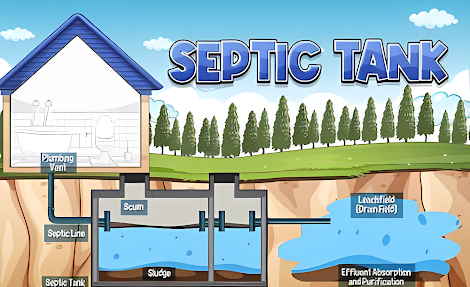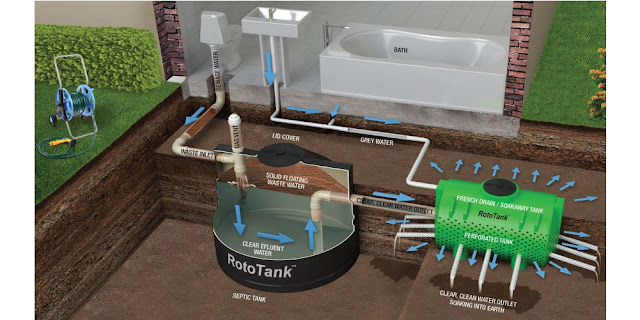What are the purposes of a septic tank?
Understanding the Purposes of a Septic Tank: A Crucial Component of Wastewater Management
Septic tanks are integral to properly functioning many homes and businesses, mainly in rural or off-grid areas, without access to a centralized sewage system. These underground systems play a vital role in wastewater management, providing an efficient and environmentally friendly way to process and treat household sewage. The various purposes of a septic tank and why it is a crucial component of a property's sanitation infrastructure in below.
1. Wastewater Treatment:
One of the primary purposes of a septic tank is to treat wastewater generated within a property. When water is used in the home – for activities such as flushing toilets, washing dishes, or doing laundry – the resulting wastewater contains a mixture of solids, liquids, and organic matter. The septic tank acts as the initial treatment point, allowing the separation and settling of solids from the liquid portion.
2. Separation of Solids and Liquids:
The septic tank employs a simple yet effective process to separate solids from liquids. As wastewater enters the tank, heavier solids sink to the bottom, forming a sludge layer, while lighter materials such as grease and oils float to the top, creating a scum layer. The remaining liquid, known as effluent, resides in the middle layer.
3. Anaerobic Digestion:
Within the septic tank, anaerobic bacteria in the sewage break down the organic matter in the sludge through anaerobic digestion. This biological activity helps to decompose and reduce the volume of the solids, converting them into simpler substances.
4. Effluent Treatment:
The clarified liquid layer, or effluent, undergoes further treatment within the septic tank. While the initial separation process significantly reduces the number of solids, the remaining liquid still contains dissolved organic compounds. The septic tank allows for additional biological and chemical processes to occur, further treating the effluent before it moves to the next stage of the wastewater treatment system.
5. Groundwater Protection:
A well-maintained septic tank prevents the direct discharge of untreated sewage into the surrounding soil and groundwater. This is crucial for protecting the environment from contamination. The treated effluent is then safely released into a drainage or leach field, which undergoes final filtration and absorption into the soil.
6. Maintenance of System Integrity:
Regular maintenance, including pumping out accumulated sludge and inspecting the tank for any signs of damage or leaks, is essential for a septic tank system to function correctly. Routine care ensures the system's longevity and prevents clogs, backups, or environmental hazards.
Conclusion:
In summary, a septic tank is a fundamental component of a property's wastewater management system. Its purposes include
- the initial treatment of sewage,
- the separation of solids and liquids,
- anaerobic digestion,
- effluent treatment,
- groundwater protection, and
- the overall maintenance of system integrity.
Understanding these functions highlights the importance of proper septic tank care for the property owner and the environment.




Comments
Post a Comment